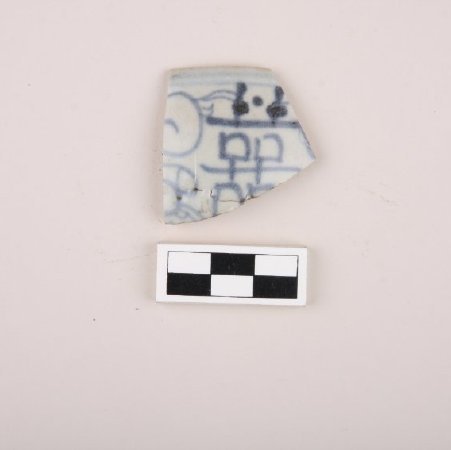Object Name:
Ceramic Sherd
Object ID:
14.046.001
Case:
Chinese Americans have always been caretakers at Stanford, first as railroad workers whose labor helped finance the founding of the institution, then as the university's earliest gardeners, cooks, custodians, and launderers whose efforts maintained the institution. A lack of surviving documents and racist legislation against Chinese immigrants impedes a historical understanding of Chinese American experiences. Artifacts excavated from campus lands and photographs support a fuller exploration of the publically perceived and privately enacted lives of Chinese Americans at early Stanford. These materials also highlight the dynamic exchanges between Chinese and non–Chinese lives. Chinese Americans were not the insular community stereotypically depicted in texts but a persistent, vibrant presence in the Stanford University community. All artifacts are from the Stanford University Archaeology Collections.
Group:
Private Life: These porcelains are of coarser quality than the enameled examples. They are characteristic of styles produced in China for Chinese consumption. The double happiness character is associated with Chinese Lunar New Year and wedding celebrations even today.
Object:
Overseas Chinese porcelain rim fragment with double happiness character hand–painted in underglaze blue. Stanford Mansion (Object ID 14.046.001 )
Dimensions:
W–2.3 L–3.5 cm
Material(s):
Porcelain
Place of origin:
North America; California; Santa Clara County; Stanford Mansion
Provenance:
Mixed artifacts excavated from the site of the Stanford's Palo Alto mansion.
Collection:
Archaeology – Stanford Mansion

